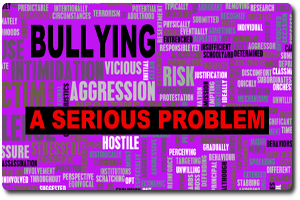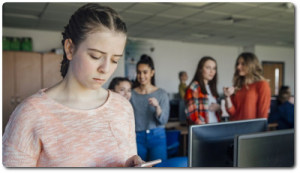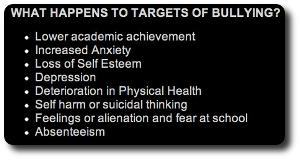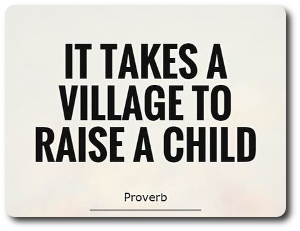 Today’s news: A quarter of all 14 year old girls self-harm. In the media, this is treated as a mental health problem. A young woman is interviewed. She cut herself for five years. There is a conversation about the lack of availability of counselling services at school, which may have helped her process the difficult kind of emotions she felt so alone with. Her mother shares the sense of helplessness she felt, her self- doubt and self-blame, the question she asked herself: “Have I been a bad parent?”. Her mother compares her daughter’s self-harm to an addiction and recognises the parallels to her own dependency problem of the past. Her complaint is that CAMHS did not recognise the addictive nature of her daughter’s problem; she felt left alone with her own problem – the sense of helplessness in response to her daughter’s – and believes there could have been a solution, had they understood it as an addiction, had there been sufficient child mental health resources.
Today’s news: A quarter of all 14 year old girls self-harm. In the media, this is treated as a mental health problem. A young woman is interviewed. She cut herself for five years. There is a conversation about the lack of availability of counselling services at school, which may have helped her process the difficult kind of emotions she felt so alone with. Her mother shares the sense of helplessness she felt, her self- doubt and self-blame, the question she asked herself: “Have I been a bad parent?”. Her mother compares her daughter’s self-harm to an addiction and recognises the parallels to her own dependency problem of the past. Her complaint is that CAMHS did not recognise the addictive nature of her daughter’s problem; she felt left alone with her own problem – the sense of helplessness in response to her daughter’s – and believes there could have been a solution, had they understood it as an addiction, had there been sufficient child mental health resources.
The medicalisation of this young woman’s self-harm is one way of framing the problem, it gives us one kind of story. However, we can add more frames to what the young woman tells us. At the beginning of the interview, she mentions that she was bullied by two other girls. What storyline would have emerged, had the interviewer followed that lead further?
For one, this young woman’s self-harm would not have been individualised, would not have been described only as a problem that exists within her psyche – it would have become a social problem, a problem in interaction. In Non Violent Resistance, we do not see the effects of harmful behaviour as an individual, intra-psychic problem alone; we see this as a matter of interaction, and not just as a matter of interaction that concerns the girls who bully and the girl who is bullied – we see the responsibility of an entire community around this girl, around her mother, and around the girls who have been the culprits of this harmful behaviour.
that exists within her psyche – it would have become a social problem, a problem in interaction. In Non Violent Resistance, we do not see the effects of harmful behaviour as an individual, intra-psychic problem alone; we see this as a matter of interaction, and not just as a matter of interaction that concerns the girls who bully and the girl who is bullied – we see the responsibility of an entire community around this girl, around her mother, and around the girls who have been the culprits of this harmful behaviour.
I would like to pick up some threads from the interview. Both the young woman and her mother communicate a sense of helplessness and a sense of isolation. Let’s see what questions arise, once we see the self-harm as a social issue, not an intra-psychic, medicalised issue alone.
For one, how lively are the discourses in school around bullying? Who carries responsibility for making bullying a topic that is commonly, often spoken about? What sort of conversations at school would help normalise the experience of emotional pain and the emergence of negative self-directed beliefs in the wake of bullying behaviour?
 How would the school advertise a go-to-person, once the child who is being bullied has been thus helped to feel normal? How would this go-to-person not only work with the girl, but also reach out to and include her mother? Would the teachers at the school be able to train prefects to form a protective shield around this girl, accompany her home from school, stay near during break time, look at social media and report any abuse back to teachers and the girl’s mother?
How would the school advertise a go-to-person, once the child who is being bullied has been thus helped to feel normal? How would this go-to-person not only work with the girl, but also reach out to and include her mother? Would the teachers at the school be able to train prefects to form a protective shield around this girl, accompany her home from school, stay near during break time, look at social media and report any abuse back to teachers and the girl’s mother?
How would the go-to-person and other teachers at the school, the mother and the girl work together and plan reaching out to not only the bullying girls, but also their parents? Would teachers at the school be able and allowed to work with presence and initiate intense, but fair and inclusive conversations with the bullying girls and their parents, or would they be in contravention of the school’s behaviour policy if they did not punish and operate with the threat of exclusion? How would they plan raising their presence with the bullying girls and their parents in such a way, that they do not antagonise them and do not trigger fight responses on the part of the other parents?
Would this practice help the teachers feel less afraid of the bullying girls’ parents’ responses? How would they create conversational space for the other girl’s parents to witness the bullied girl’s suffering with compassion? How would they advise these parents to communicate with their daughters, so they do not escalate and prevent these girls from becoming even more hostile?
Would the teachers use restorative practices to facilitate dialogue between the bullying and the bullied? How would the relationship between mother and daughter change?
Let’s follow this story line back into the field of mental health with some questions about this girl’s emotional wellbeing: Once she has found her voice in the process of an entire community peacefully resisting the bullying, and become a resistor together with her mother and her teachers, how will this affect her emotions? Will she continue to predominantly experience helplessness, or will she feel more personal agency?
she has found her voice in the process of an entire community peacefully resisting the bullying, and become a resistor together with her mother and her teachers, how will this affect her emotions? Will she continue to predominantly experience helplessness, or will she feel more personal agency?
Will some determination come into an emotional space in which there was only distress before? To what degree will the focus of her attention redirect itself outward, into the social world, rather than remaining locked on the painful internal process? Will we see such communal resistance as part of the ‘treatment’?
Does it still make sense to speak of ‘treatment’, when we no longer see a -passive- ‘patient’, but instead a girl who becomes a pro-active agent in her own story, a story the authorship of which she herself has assumed?
For the young woman of the interview, all this will come too late. She has found ways of overcoming the self-harm problem, and I am glad for her. I am glad for her mother to not longer have to suffer the agony of a parent’s worry for their child. Could a plot that emerges from answering these questions become the story of another girl in the future?
Dr Peter Jakob
Director PartnershipProjects

